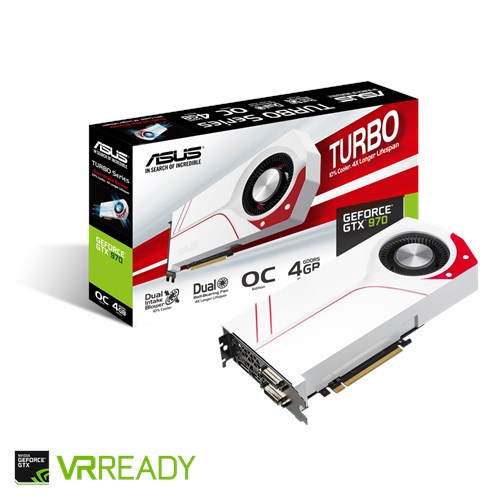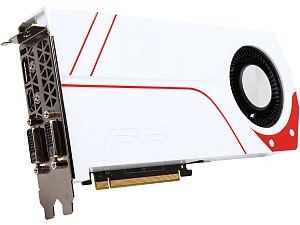I'm about to buy a new graphics card, but I'm concerned that my sound card might end up blocking the airflow, being just an inch away. It hasn't been an issue before because my current card is long and has the fan at the far end, well out of the way of the sound card.
This is the card I'm considering. One of those fans will have the sound card over it at a distance of just 1 inch. Is that close enough to cause problems?
-
2016-02-02, 02:57 AM #1
Graphics card fan obstructed by sound card?
-
2016-02-02, 03:10 AM #2
What kind of motherboard do you have? If you have another PCIe slot that doesn't obstruct the fans you can move the sound card to that one instead. Most ATX motherboards have a PCIe x1 slot above the PCIe x16 slot. Of course, if you have an mATX or ITX board then you might not have this option.
I would imagine that it would be fine even if it does obstruct the fans, MSI Twin Frozr coolers have semi-passive cooling anyway, which means your fans won't even spin under light loads, i.e. if you're playing games that aren't graphically intensive like WoW or LoL. Your card will probably run a bit hotter when the fans do end up spinning but it shouldn't cause any problems unless you are overclocking the card a lot.
-
2016-02-02, 03:20 AM #3
It's a micro ATX, the cards are as far apart as they can be. I actually forgot about the Twin Frozr, so hopefully it won't be too much of an issue then.
I've also just discovered PCI extension cables, so I may be able to move the sound card down after all.
-
2016-02-02, 02:09 PM #4Elemental Lord


- Join Date
- Nov 2011
- Posts
- 8,358
The fans are exhaust, so they will basically be blowing the heat on to the sound card creating a hot spot. If your case has good airflow, this will not be too big of a problem, but your GPU may run a little hotter than normal.
For future reference, this is why sometimes people with mATX/ITX build prefer reference style coolers on their GPUs. Reference style are typically "sealed" better and have an intake fan then shhot the air out of the back of the case. These tend to run hotter than the better coolers also though, so the end result will likely be the same. Smaller case means the same amount of heat in a smaller area, so your hot spots will tend to be closer to or on components. Most people with decent cooling are running so far below safe temperatures that it's not a big deal though. Those few extra degrees will still leave you within safe levels. I would certainly run a stress test and see where they put me before doing anything else though.Last edited by Lathais; 2016-02-02 at 02:56 PM.
-
2016-02-02, 08:35 PM #5
-
2016-02-02, 08:49 PM #6
The fans are most deffo intake and not exhaust.
No graphics card would function properly if it were exhaust as you'd endlessly re-heat the card.
-
2016-02-02, 10:06 PM #7Elemental Lord


- Join Date
- Nov 2011
- Posts
- 8,358
Huh, shows what I know then. I always thought fans on GPUs worked similar to CPU Heatsinks, exhausting the heat away from the GPU and in to the case where your case airflow removes the heat. Guess I am wrong though. If they are in fact intake and blowing air onto the GPU, there is even less of a reason for concern.
-
2016-02-02, 10:45 PM #8
Seems to be a bit of confusion here.
The fans are intake, meaning they suck air IN. The air blows INTO the card and onto the heatsink and pipes, which cool the GPU core.
The hot air generated by the GPU "exhausts" into the case. I think this is where you got confused, Lathais. All GPU cooler fans are intake because they are drawing air in, but the resulting heat from the GPU core is exhausted back into the case. This is where there's a big difference between the MSI cooler the OP has and a reference "blower" style cooler like this Asus GTX 970 Turbo:

These "blower" coolers are completely enclosed by a plastic shroud, so while the intake fan is still drawing air in, any hot air is being "exhausted" through the vents at the rear of the card. The hot air goes out those vents and out of the case completely.
The MSI card and most nearly almost every other non-reference card these days (Asus STRIX, Gigabyte G1/Windforce, etc.) have an open shroud design. You can see that although there is a shroud around the fans, it is not completely enclosing like the white Turbo card I linked about. It's an open-air design that lets heat escape back into the case.
This style of cooler is generally has better thermal performance (lower temps). Having two or three large fans spanning the entire length of the cooler instead of just one small one at the very end of it means that the fans can push more airflow while spinning at slower speeds (or not even spinning at all), resulting in much quieter and more efficient operation. However, because the hot air is exhausted into the case, it's vital to have a case with good airflow. On the flipside, "blower" style coolers exhaust all the air out the vents at the back of the card (by the display connectors). They're generally smaller too (depth wise), only taking up two slots instead of 2.5 or 3 slots. This makes them a viable option for mATX/ITX/HTPC/SFF/cube/etc. builds where space is a major constraint and your case does not have great airflow.
Generally the term "intake" and "exhaust" for fans only need to be used to talk about and identify case fans (fans at the front are intake, fans at the rear are exhaust) or when you have a WC radiator in place of case fans. GPU fans always draw air in and onto the heatsink/GPU core.Last edited by Denkou; 2016-02-02 at 10:48 PM.
-
2016-02-02, 10:56 PM #9
There's a difference in construction and design but you're also seeing the effect of a CPU cooler wrongly.
The GPUs have generally far higher power requirements and thus require more cooling but it has to be done with a cooler that is generally less of a footprint to cool stuff than CPU heatsinks.
Also the GPU is positioned horizontally which makes it innately harder to dissipate the heat since the GPU itself is pointed down, catching hot air and trapping it thus requiring a forcible push through the heatsink.
(There are deviations to this standard but they are far and few and mostly tied to SilverStone's Raven case line)
And than comes the inherent mistake you're making and at the same time not.
CPU Heatsinks actually are intakes as well and push cold air through the heatsink body to cool off the heat onto the pipes.. as any design for a cooler is based.
They are designed in such a manner that regardless of your case the device itself is being cooled.
Most cases can work without case fans and stuff would work fine MOST of the time.
That isn't to say that you can't change it to how you viewed it by putting the fan on the other side of the heatsink working as pull rather than push.
(Yes this is actually similar to a radiator and is the same discussion of "what is better? Push or Pull")
But this is less effective with lower airflow that it is as a push method.
You aren't wrong in CPU and GPU cooler design but you're not right either.
Think about it this way.. if the fans were exhaust .. why would the fans be on the outer side of the heatsink?
To blow the air downwards, going back to thermodynamics here, to be re-used by the heatsink because the air rises and get stuck in a convection loop that self perpetuates hotter and hotter heatsinks (Yes this would actually work almost like a hot air oven)?
If they are intake they blow fresh air upwards against the card and heatsink, the air is then expelled from the side of the heatsink and back of the card and rises up.
This prevents the hot air from being re-used and naturally expels the heat.
Also there is the matter of fin design since it's an "air scoop" in a fan to push the air in a direction.. can't really push air into a direction when the fins are pointed the wrong way can you? It'd literally cause air to glide past it and even out.. creating the most dangerous situation.
A vacuum over the GPU.

 Recent Blue Posts
Recent Blue Posts
 Recent Forum Posts
Recent Forum Posts
 Dragonflight and Season of Discovery Hotfixes - April 25, 2024
Dragonflight and Season of Discovery Hotfixes - April 25, 2024 Did Blizzard just hotfix an ilvl requirement onto Awakened LFR?
Did Blizzard just hotfix an ilvl requirement onto Awakened LFR? What's the state of PvP like today?
What's the state of PvP like today? MMO-Champion
MMO-Champion



 Reply With Quote
Reply With Quote



